PROTECT YOUR DNA WITH QUANTUM TECHNOLOGY
Orgo-Life the new way to the future Advertising by AdpathwayThe last things you want to see in the garden are strawberry plants with no strawberries! A fruitless garden is a travesty. By taking a close look at your plants, we can figure out what’s wrong and learn how to address the issues.
Old plantings may decline over time, while new ones need time to mature properly. Every garden is different, and there is a wealth of strawberry varieties and species to choose from. Know what variety you have, your garden’s conditions, and how old your plants are. Knowing these factors will help you determine what’s wrong with your strawberries.
So, let’s figure out what’s wrong! Try these 11 fixes if your strawberry plants have no berries this season.
Everbearing Strawberry Plants
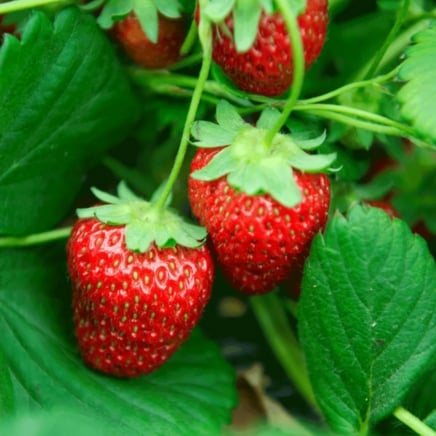
Everbearing strawberry plants feature:
- Continuous harvest from summer to first frost
- Sweet, flavorful fruit ideal for fresh eating or jam
- Compact size perfect for containers or small spaces
- Adaptability to a wide range of climates
Protect From Frost
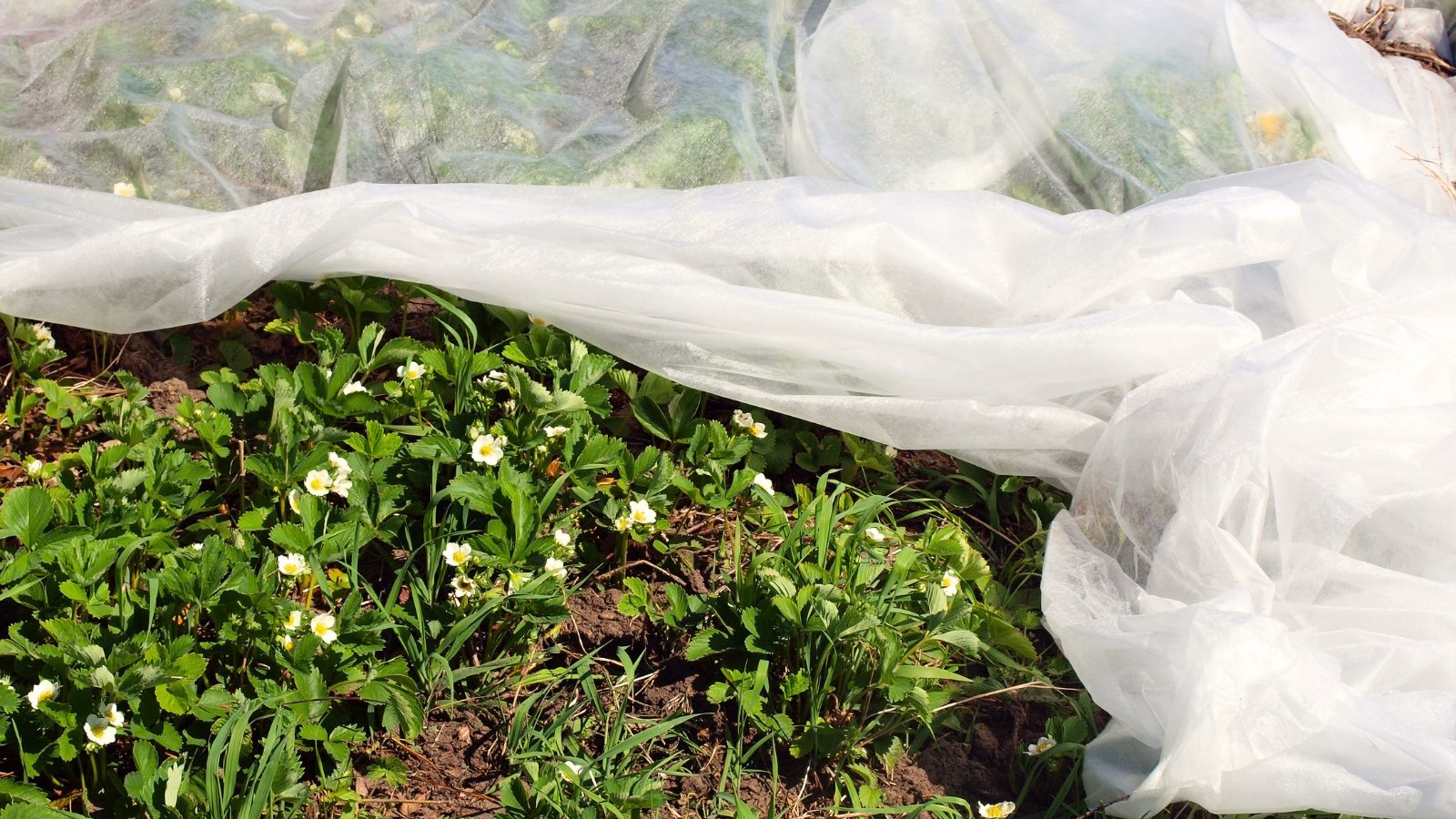 Covering young blooms helps keep the frost damage away.
Covering young blooms helps keep the frost damage away.Late frosts in winter and early spring can zap budding flowers before they mature into strawberries. Though strawberry plants are frost-tolerant when they’re dormant in winter, their flowers are sensitive to ice and snow. If you see flowers appear and spring frosts are still occurring, you’ll want to protect them so they produce fruit.
Use row cover, frost cloth, or greenhouse plastic to insulate and warm the strawberries in late winter and spring. Place metal hoops in the ground, then clamp the covering onto them.
If you don’t have protective materials, you can use old bedsheets. The cloth layer traps heat and moisture. Simply drape the sheets over the strawberry rosettes on frosty nights, then remove them during the day when temperatures rise above freezing.
Prevent Cold Damage
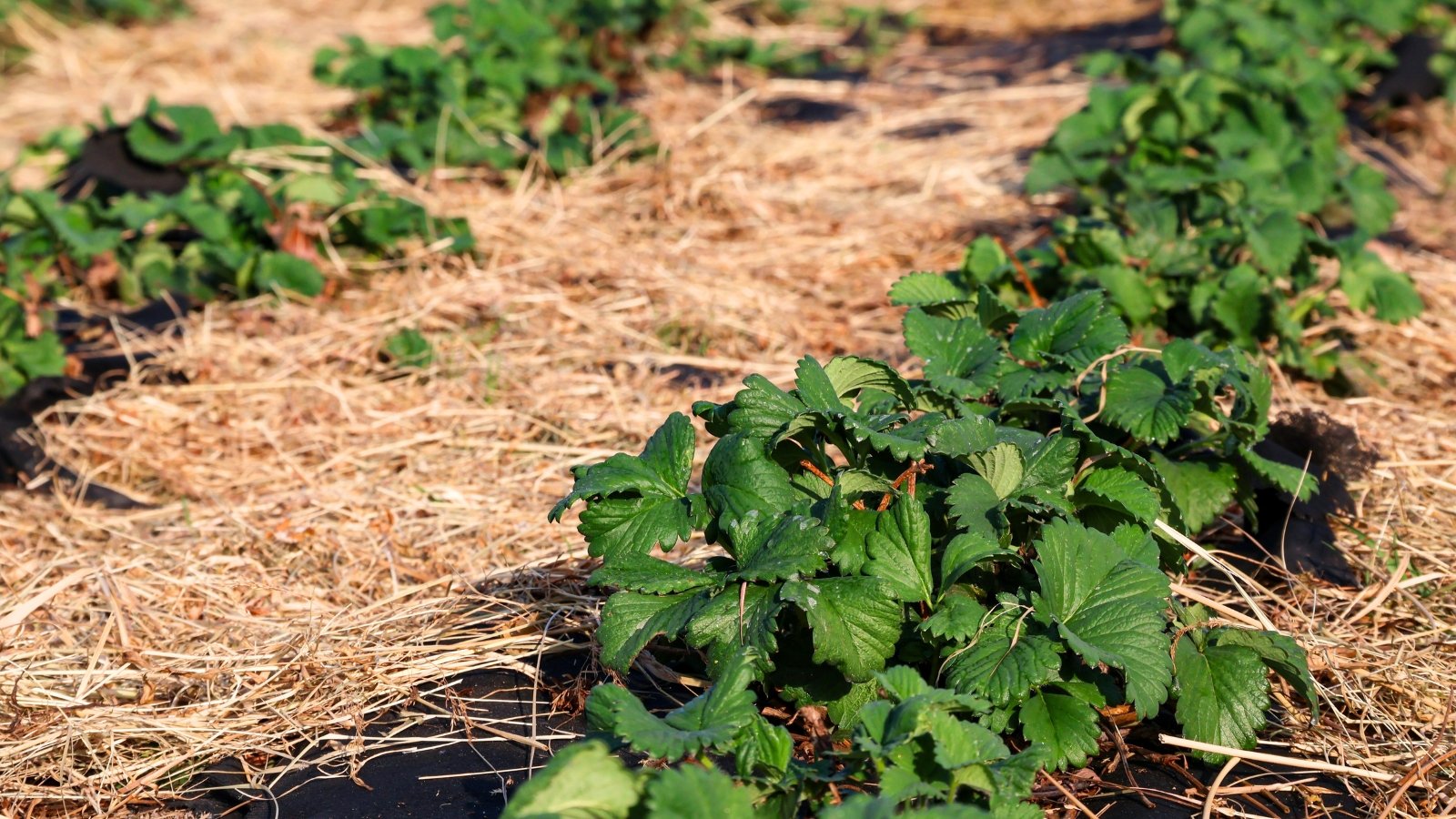 A layer of straw mulch can shield strawberries from unexpected frosts.
A layer of straw mulch can shield strawberries from unexpected frosts.Cold temperatures can also prevent fruit formation in your crops, resulting in strawberry plants with no berries. When temperatures fall from 10ºF to 20ºF (-12ºC to -7ºC), cold damage can occur. You’ll notice the symptoms in spring when winter-damaged strawberries struggle to flower and sprout new leaves. Some may die before they grow again!
How to prevent cold damage depends on your local climate. If the winter is full of snow and ice but relatively dry, you may use a thick layer of straw to insulate the plants’ crowns. Avoid using straw in wet regions with winter rains.
Leaving old leaves on the strawberry crowns can help protect them during the cold months. These leaves prevent frost and cold from entering the tops of the plants. Though protective, they may host overwintering diseases that affect fruit quality in spring. Leave them on for the winter, but promptly remove them in late winter or early spring.
Increase Pollination Rates
 Warm sun brings the pollinators that help fruits grow right.
Warm sun brings the pollinators that help fruits grow right.Strawberry plants rely on pollinators to form juicy, delicious, and well-shaped fruits. When pollinators are absent or present in low numbers, you may find misshapen or poorly formed strawberries. Watch for pinches, grooves, and ridges in the fruit, as these are symptoms of poor pollination.
Pollinators are naturally present in low numbers when the weather is cloudy, stormy, or cold. There’s nothing you can do to fix the weather! Simply wait for warm weather to bring more pollinators. The misshapen fruit is still edible despite its wonky looks, so don’t let it go to waste.
If pollinators are still absent during sunny, warm weather, they may not know your garden exists! Give them a water source, like a fountain or bird bath, and plant more flowers to lure them to the site. Native plants, wildflowers, and flowering shrubs are excellent lures for pollinating bees, birds, butterflies, and moths.
Remove Weeds
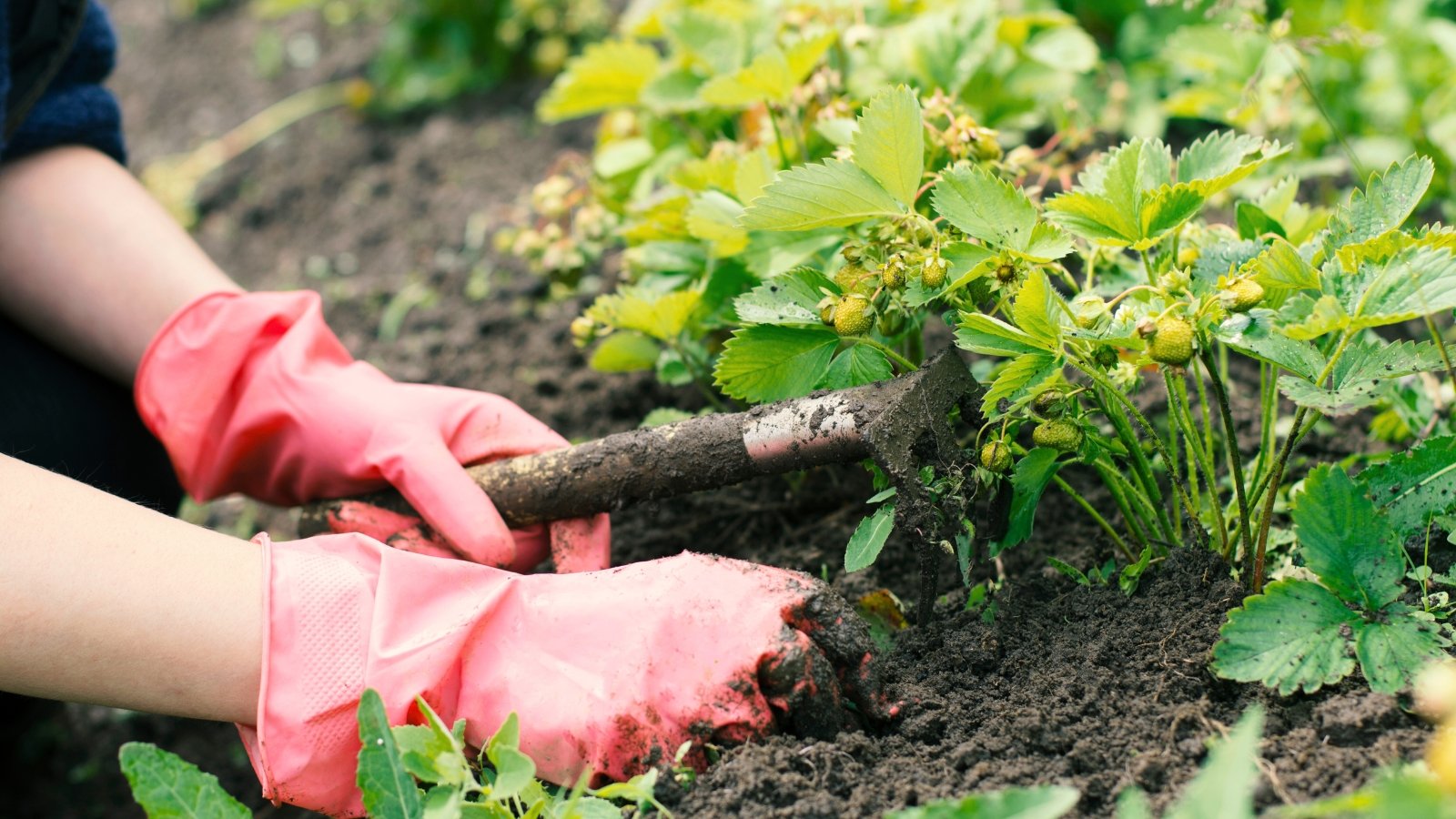 Early weeding keeps roots happy and fruit on track.
Early weeding keeps roots happy and fruit on track.Weeds suck up moisture and nutrients out of the soil, preventing your strawberry plants from accessing the same resources. When ample weeds are present, you’ll likely see few flowers and strawberries throughout the growing season.
The best time to pull weeds is when they’re small, early in spring or summer. Pull their weak roots out of the ground with your hands, or use a tool like the CobraHead weeder and cultivator.
Deep-rooted specimens like dandelions are tough to pull with your hands! Dig them out with a trowel or small shovel to ensure no roots remain in the ground.
Provide More Light
 A full day of sun means a full harvest later.
A full day of sun means a full harvest later.Strawberries need bright light to grow well. They thrive under full sun, with six or more hours of daily direct sunlight. So long as they receive enough hours of direct sunlight, they’ll grow berries during the fruiting season.
Afternoon shade is acceptable in areas with excessive summer temperatures. The afternoon can grow too hot for your strawberry crop. So long as the plants receive six or more hours of daily direct sunlight, some afternoon shade won’t harm flowering or fruiting.
Add Fertilizer
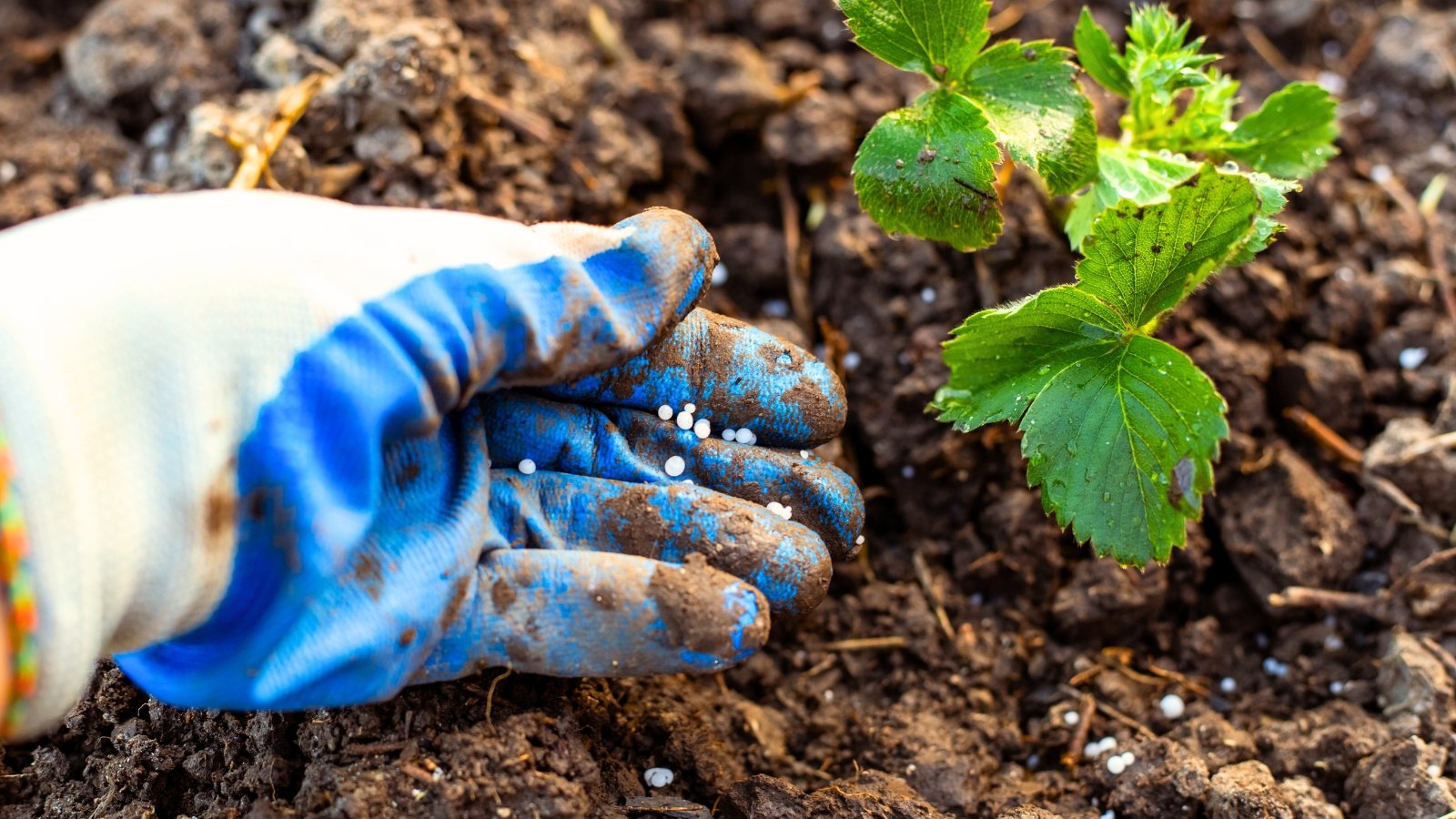 Summer flavor starts with springtime fertilizer—don’t skip it.
Summer flavor starts with springtime fertilizer—don’t skip it.As with all berries, proper nutrient levels are imperative for healthy fruit production. Give your strawberries the nutrients they need, and they’ll reward you with bushels of fruit all summer long. How much fertilizer to use and when to use it depends on the type of varieties you’re growing.
There are three main strawberry types: everbearing, day-neutral, and June-bearing. Everbearing varieties have two fruiting seasons, one in June and another in late summer. Day-neutral types produce strawberries so long as the weather is warm and sunny. June-bearing specimens sprout their fruit all at once in June or early July.
Fertilize everbearing and day-neutral varieties once a month for three months after they sprout new growth in spring. Fertilize June-bearing varieties once after they finish fruiting, in late June or early July.
Improve Soil
 Compost in spring keeps roots full and flowers coming.
Compost in spring keeps roots full and flowers coming.Proper soil is essential for healthy strawberries! These fruiting crops prefer loamy, well-drained, and fertile soils with plenty of organic matter. They appreciate annual helpings of compost or a similar mulch to keep their roots happy, healthy, and well-fed.
To amend the soil, add a layer of compost two to three inches thick in early spring or fall. Be careful not to cover the crowns where new growth emerges. Covering them can lead to rot or similar diseases. Avoid using straw or black plastic at home, as they can promote pest activity underneath the mulch layer.
Renovate Old Plantings
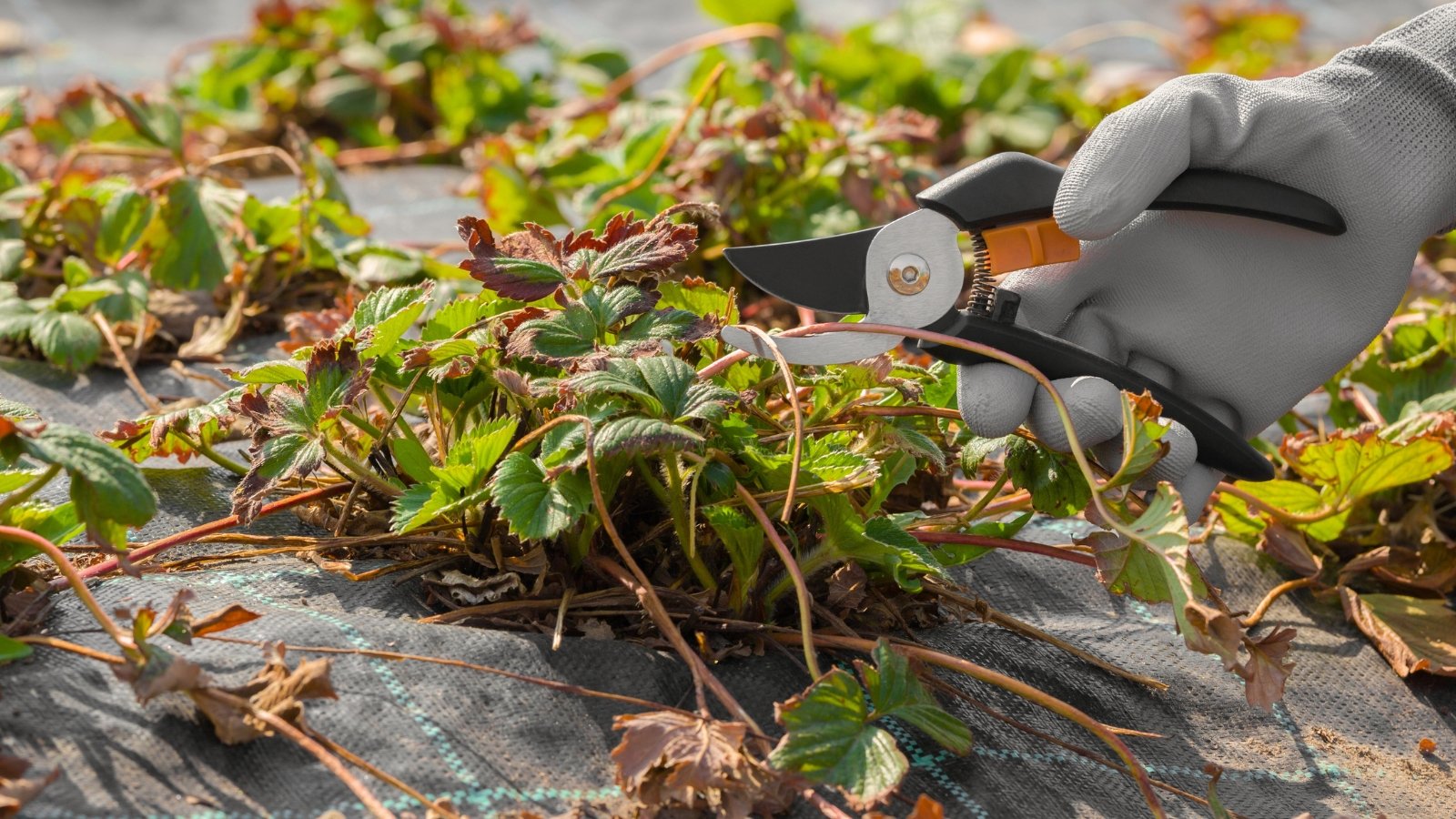 A little pruning now means sweeter fruit next season.
A little pruning now means sweeter fruit next season.Unlike other perennial crops, strawberry crowns weaken over many years. They’ll require renovation or replanting to continue fruiting at optimal levels.
Renovate June-bearing types by removing their old leaves in late summer or early fall. Add mulch to the site, and arrange the runners so they sprout in the planting row. Runners are long, thin stems that sprout clones of the mother plant.
Avoid renovating everbearing or day-neutral types. After three to four years, it’s a good idea to remove poor-performing strawberry rosettes and plant fresh ones in a new location. Rotate the site every few years to prevent pests and diseases from building up.
Let New Plants Mature
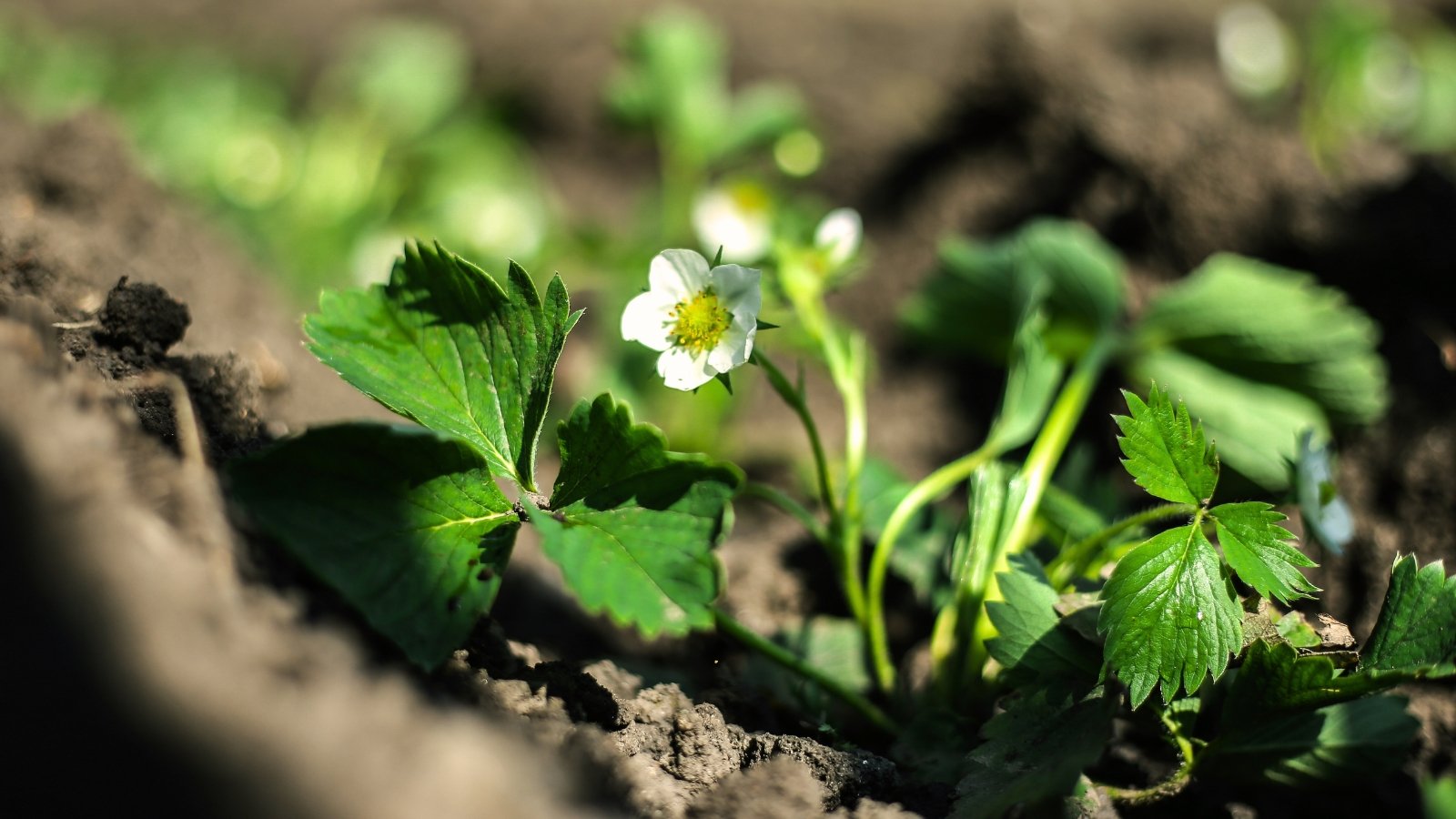 New plants need time and love before they fruit.
New plants need time and love before they fruit.If you just bought plants this year and don’t see fruit, chances are they’re too young! Young plants need time and care to develop flowers and strawberries. Give them the care they need, and they’ll likely produce fruit the next year.
New plantings may need more fertilizer than established ones if the site has nutrient-poor soil. Use a soil testing kit to determine how fertile the site is if you’re unsure. Then, add appropriate levels of fertilizer to guarantee the plants have a healthy start.
Manage Pests
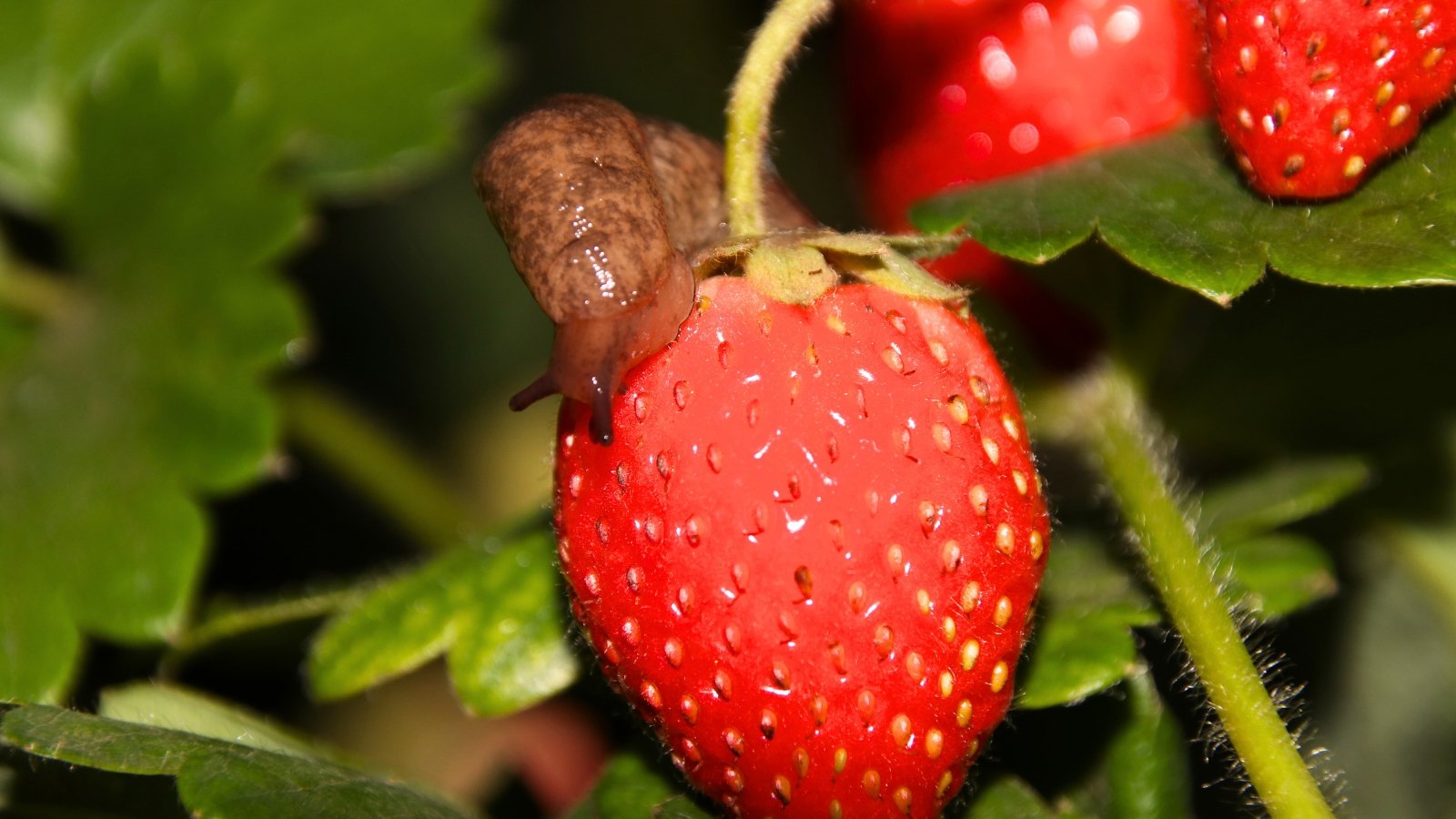 Tiny invaders love nibbling roots and juicy harvests.
Tiny invaders love nibbling roots and juicy harvests.Pests are the last thing you want to see in the strawberry garden! Grubs tunnel their way into the crowns, slugs eat the fruit, and burrowing rodents eat the roots, leaves, and strawberries. Managing these pests will help protect your harvests for maximum yields.
A healthy garden ecosystem has beneficial predators that target these pests, so you don’t have to. Before spraying the site with toxic pesticides, consider using less harmful prevention and treatment methods to tackle the issue. Pulling weeds, adding row cover, and inviting pollinators and predators are some easy ways to start.
Treat Diseases
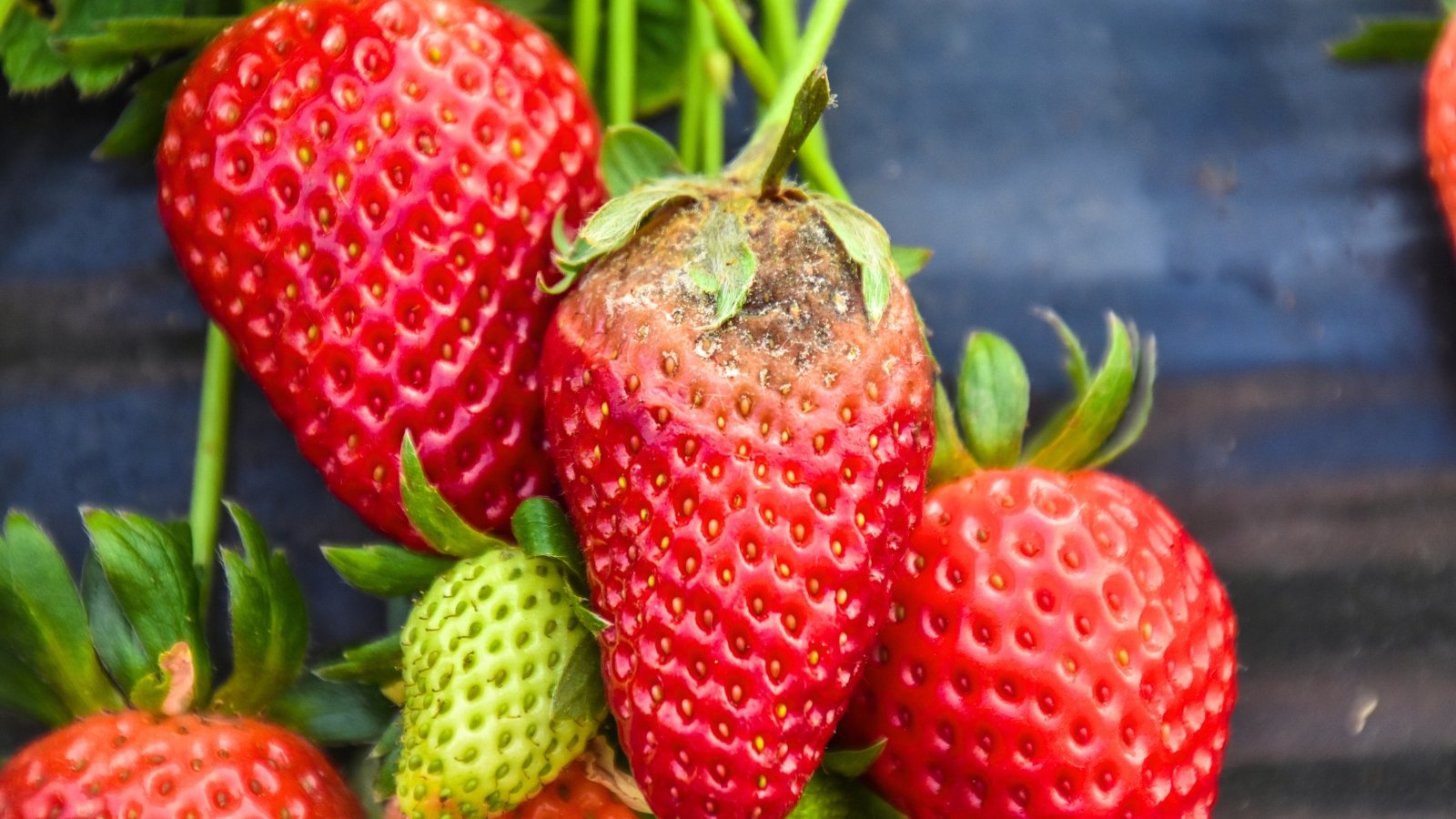 Rot and mildew love hiding where plants get cozy.
Rot and mildew love hiding where plants get cozy.Diseases, like pests, threaten your growing strawberries before you can harvest them! Rots, molds, and mildew may harm the fruit or the plant crowns. Clean up the plants in early spring to remove possible infection sources. Old leaves and decaying fruit can spread spores or bacteria onto new ones.
Crop rotation helps reduce the likelihood of infection, as it starves the pathogens of their food source. The diseases need fresh plants to continue growing, and they’ll die out without their hosts.


 4 weeks ago
22
4 weeks ago
22





















 English (US) ·
English (US) ·  French (CA) ·
French (CA) ·